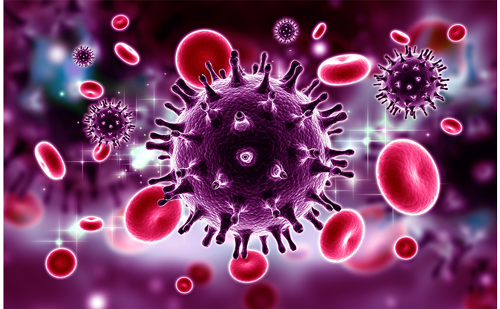The expansion of HIV treatment access during the past two decades, particularly in low- and middle-income countries, stands as a significant accomplishment in the field of public health.1 Currently, there are an estimated 30 million people on antiretroviral treatment for HIV globally, of whom approximately 70% reside in Africa.2 Despite advancements in the provision of antiretroviral therapy (ART), challenges remain in maintaining people living with HIV (PLWH) in successful, sustainable and responsive HIV treatment programmes, which are fundamental to ending the HIV epidemic. There are approximately 9 million PLWH globally who are not receiving treatment, and among those who are receiving the treatment, approximately 30% have unsuppressed HIV viral loads.2 There is an urgent need for health systems to ensure better access and support for individuals who are not currently receiving HIV care and provide those in HIV care with opportunities to enhance their care engagement.3 The objective of this editorial is to call for research, innovation, funding and collaboration to bolster evidence for differentiated models of HIV care.
Differentiated service delivery (DSD) is “a client-centred approach that simplifies and adapts HIV services across the cascade in ways that both serve the needs of PLWH better and reduce unnecessary burdens on the health system”.4 Essentially, when a health system adopts a more responsive model of care that is tailored to the needs of various groups of PLWH, it can allocate resources more effectively, provide better access for underserved populations and deliver care in ways that effectively improve care quality.4 Models of DSD have largely been implemented in high-prevalence countries in sub-Saharan Africa (SSA) and include client-managed groups, healthcare worker-managed groups, facility-based individual models and out-of-facility individual delivery models.4 Although DSD models, including home ART delivery, have been implemented in SSA with evidence of sustained or improved clinical outcomes compared with conventional care, most programmes have been limited to clinically stable, adult clients and rarely target the unique needs of vulnerable groups.5,6 For example, adolescents and young people living with HIV (YPLWH) have historically experienced worse HIV treatment outcomes compared with their adult counterparts.7–9 In SSA, YPLWH experience significant barriers to accessing traditional HIV care services, including a lack of disclosure to family and peers; overcrowded clinics with long wait times and inflexible scheduling; a lack of confidentiality at clinics; stigma from providers, community members and peers and a lack of adolescent-friendly spaces.10–12 Implementation of DSD models may provide opportunities to confront the structural barriers that prevent YPLWH from engaging in HIV care.
Although it is apparent that vulnerable populations in SSA and globally would likely benefit from differentiated models of HIV care, there has been a lack of investment in testing innovations in DSD, evaluating the potential large-scale impact of DSD approaches and exploring considerations for DSD implementation. The COVID-19 pandemic, however, conveyed a powerful message to the world about the need to build a resilient and sustainable health system and accelerated the adoption of new ways to improve healthcare globally, including home-based and virtual healthcare services.13 For example, we conducted an evaluation of a courier home ART delivery intervention among YPLWH in Cape Town, South Africa, which was funded through a COVID-19 Emergency Response Fund from ViiV Healthcare, London, UK. From February to October 2021, we enrolled YPLWH aged 13–24 years into a pilot study, which was aimed at examining the acceptability, feasibility and preliminary effectiveness of a courier ART delivery intervention to retain YPLWH in HIV care while reducing patient visits to the clinic during the COVID-19 pandemic (Bidirectional, Upbeat communication and Differentiated, Distanced care for Young people [BUDDY]; ClincalTrials.gov identifier: NCT04781400).14 All participants had the option to enrol in the courier ART delivery service. We found high uptake and acceptability of the courier ART intervention as well as promising evidence for its effectiveness in increasing viral suppression. This is one of the first studies to provide home ART delivery as a model of DSD for YPLWH in SSA, and our findings indicate that there may be a promise for this delivery modality within DSD models in South Africa post-COVID-19.
There are several priority areas for investigation for DSD research, including the impact on key populations and clinically unstable patients, integration with comorbidities and co-infections and large-scale programme evaluations that incorporate implementation science designs to bolster evidence for the benefits and costs of DSD at scale.15 Research is also needed to inform DSD models across HIV treatment and prevention cascades and for novel treatment and prevention modalities, including long-acting injectable ART, which will carry unique implementation challenges.16 Although the COVID-19 pandemic has facilitated recent investment in DSD research, it is now imperative that we capitalize on this momentum and continue ‘driving forward’ to generate evidence for DSD interventions among those who stand to benefit the most. Moreover, in addition to continued investment from funders, engagement with local policy-makers, healthcare workers and PLWH is critical to obtaining policy-, organizational- and client-level support for successful DSD scale-up. The COVID-19 pandemic revolutionized health systems globally by demanding rapid innovation in the provision of accessible care and allowing us to reimagine the way healthcare is delivered. In this post-COVID-19 era, we must continue to expand the evidence base for DSD, ensuring its successful implementation and ultimately transforming HIV healthcare delivery worldwide.












